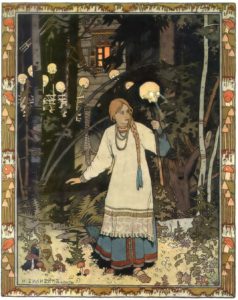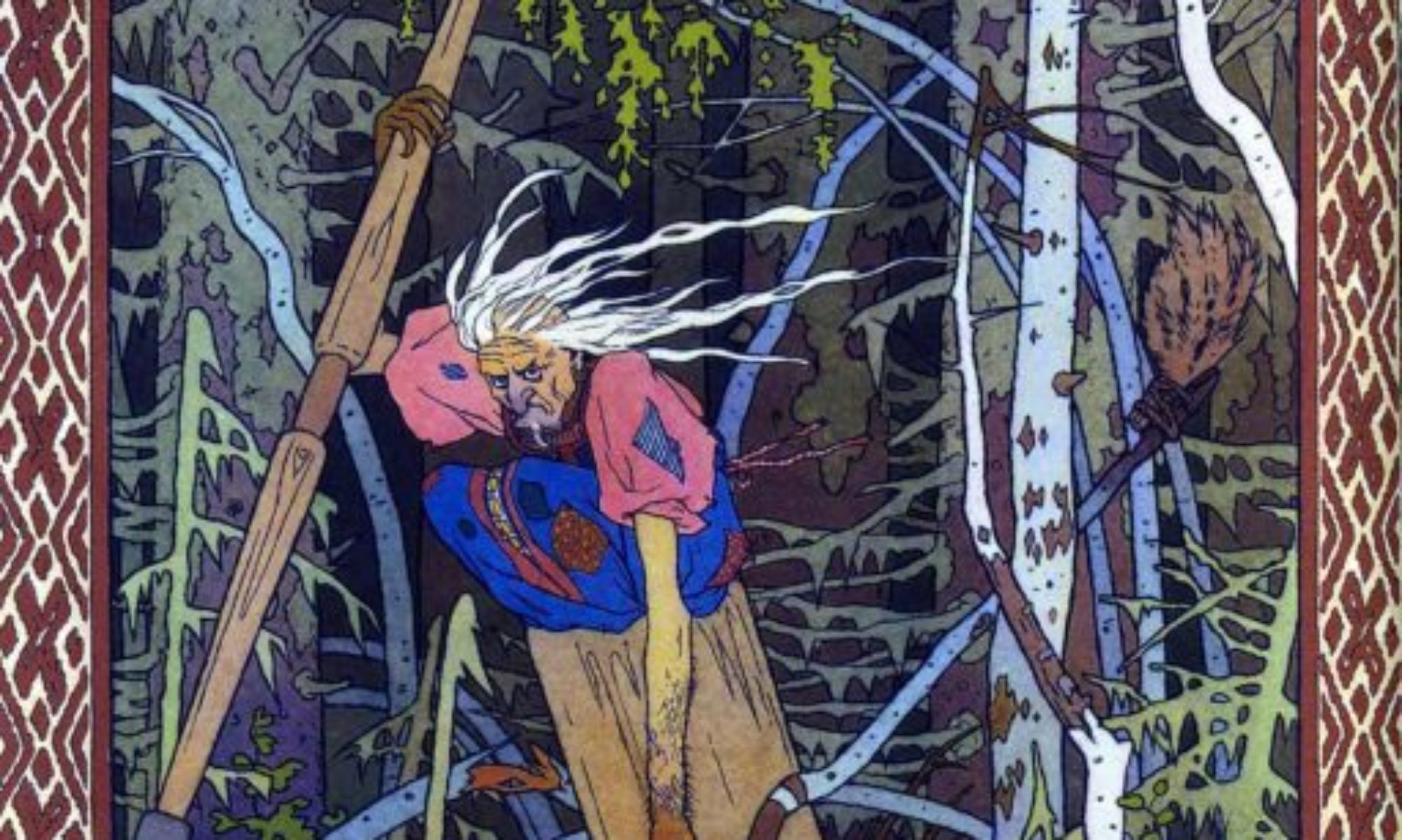This tale supports the fact that Baba Yaga does not ask male heroes to complete difficult tasks. Baba Yaga shows up at their house, and essentially steals their food. It can be concluded that Baba Yaga is testing their masculinity. Similar to Little Phillip showing his maturity through being unable to be forced into the oven, Little Bear is showing that he is developing into a masculine young man. By defeating Baba Yaga, he is essentially shedding the skin of the little boy who did not fit in with his clan and growing into a mature adult. 
Your Source to All Things Baba Yaga – Intro
Through the exploration and research in primary texts, Slavic history, and folklore theory, three main aspects of a prevalent figure in Slavic Folklore will be addressed. These three main aspects describe the life, origin, symbolism and the roles of Baba Yaga. Primarily, this research will focus on the etymology of Baba Yaga and her main characteristics. In addition, the exploration will include the comparison of Baba Yaga as either good or evil. Lastly, there will be an in-depth look at Baba Yaga’s roles in her marginal position between both the world of living and the otherworld. With this research will come answers about a figure in Slavic folklore that has been greatly speculated about. Still, there isn’t a concrete definition of Baba Yaga but through research and the Slavic Folklore, Baba Yaga can be primarily viewed through the phases of the moon, as good or evil, a villan, a donor or even as a mother figure.
Conclusion
Baba Yaga may still not have a concrete definition or role in Slavic Folklore, but she remains a key figure in many different types of folklore. Whether good or evil, she is still able to intrigue us with her mysterious ways, yet deter us with her unpleasant actions and gruesome appearance. However, though she may remain mysterious, Baba Yaga plays a crucial role in the character development of the heroes. Baba Yaga’s different roles shed light onto who the hero is becoming. Her tasks for female characters act a test on their transformation into womanhood and their readiness for husbandry and housekeeping (Forrester, Sibelan E. S., et al.). Her ruthless attitude and behavior towards male characters and failure to present them with tasks is symbolic of their transition into manhood and their growing ability to fend for themselves. Baba Yaga’s actions and behaviors act as a definitive role in the maturing and developing of these young characters.
Baba Yaga as a Villian
Baba Yaga is most commonly known for her role as a villain. She is often portrayed as a old hag who “flies around using a mortar and pestle” (Baba Yaga in Popular Culture.), kidnapping and eating young children. When taking the role of the villain, Baba Yaga often provides an impossible task for the hero to complete. Failure to complete the task will ultimately result in death for the hero. The hero must be clever or use magical assistance to complete the tasks set forth by Baba Yaga and escape. Villain Baba Yaga is often used as a scare tactic for children growing up in Slavic culture. Parents threaten their children with a visit from Baba Yaga should they not do as they are told (Yegorov). Her monstrous demeanor when taking the role of the villain is enough to keep young children in line.
Baba Yaga as a Donor
Baba Yaga sometimes acts as a donor in some Slavic folktales. As a donor, Baba Yaga assists the hero to their victory in someway. This can be through offering advice and wisdom or granting access to a magical tool. In some cases, characters will seek out Baba Yaga for “her wisdom or having her offer guidance to lost souls” (Forrester, Sibelan E. S., et al.). Baba Yaga, in the role of a donor, can be gentle and kind rather than ferocious and cruel. Some tales even depict Baba Yaga as having two older sisters, who are ironically named Baba Yaga as well. The sisters will work together to offer assistance to the heroes in need, often directing them to the next sister for guidance.
“The Swan Geese”

In this tale, it is important to note that the swan-geese are helpers to Baba Yaga. In a sense, they embody the same spirit as the old witch. The heroine is given tasks to complete at the beginning of the tale. However, because she neglects to complete them, her life and her little brother’s life is put at risk in the presence of Baba Yaga. In female tales, Baba Yaga appears as a villain and the tasks she presents to the heroine will result in life or death for the child. She, again, is testing the girl in this story through the tasks. In the end, the heroine is victorious and completes the tasks to hide from Baba Yaga and save her little brother.
“Little Phillip”

In this tale, Baba Yaga is portrayed as an evil, cannibalistic villain. It is important to note that while she does play a villain, she does not provide tasks for the young hero. Instead, she simply tells her daughter to “heat the stove and to roast Little Phillip” (Johns, 47). Baba Yaga shows no mercy for male heroes. Johns suggests that the act of showing no mercy and wanting to force the boy into the oven is symbolic of a mother wanting to her child back in her womb. “Perhaps the range in the hero’s age reflects a cultural anxiety about male children and their ability to form a masculine identity, not only as infants and small children, but even into puberty,” Johns states. In the traditional Slavic culture, mothers feared their sons would not achieve the level of masculinity that was expected of them. Baba Yaga’s failure of forcing Little Phillip back into the oven may mean that Little Phillip is maturing and developing into a young man who can save himself from these sorts of dangerous situations, and his mother does not need to watch him with such a close eye.
“Vassalissa the Beautiful”

In this story, it is obvious that the heroine is a young girl and Baba Yaga is the villain. Baba Yaga provides a set of tasks for Vassalissa to complete. Scholar Andreas Johns states that this Baba Yaga taking on the role of a “hostile tester”, a subtype of a villain (Johns, 117). Baba Yaga is perhaps testing the heroine’s characteristics that will aid her in maturing into a young woman, such as diligence and compliance (Johns,120). These tasks provided by the villain, Baba Yaga, are preparing young Vassalissa for womanhood and a marriage where her role is the keeper of the house. At the end of the tale, Vassalissa marries the Tsar of the kingdom. This can be seem as her prize of completing the tasks successfully and therefore allows her to move onto the next phase of her life; marriage.
